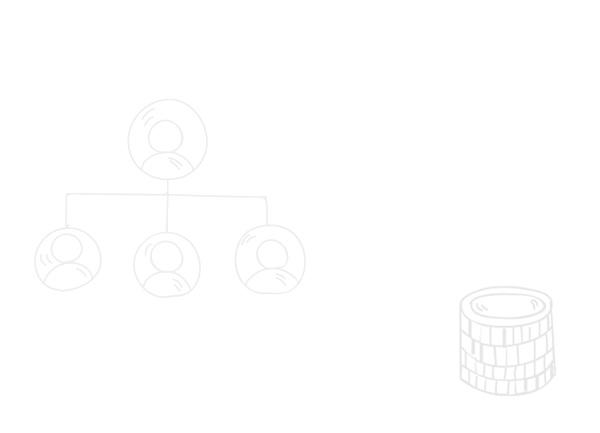ERP Systems
INTEGRATED ENTERPRISE RESOURCE PLANNING SYSTEM - DMERP
DMERP is a centralized information system that automates resource planning for a company's operations and creates a high level of internal organization.
Main functions of the system:
- Primary data is recorded on a documentary basis at the locations where it is generated.
- Control and reporting are carried out in several directions:
- data accuracy control – at the system level to prevent technical errors and incomplete information;
- control of primary information – after defining responsibilities for the various business processes and user access levels, it is possible to control and sanction information at different levels in the management hierarchy;
- reporting and control of current activities – reported indicators and their deviation from planned values are monitored.
- Planning can be short-term – creating a short-term plan that enables the operational management of materials and human/machine resources in order to respond quickly to changing conditions – or long-term – a tool for defining a strategy, optimizing material resources and capacities, financial resources, and setting the budget.
- Analyses – real-time operational and financial reports ensure transparency of business processes. Management accounting enables the planning and recording of operating costs, revenues, and prime costs in any section. Some of the reports also include graphical representations.
System modules:
Registers
customers, suppliers, contractors, contracts;
Warehouse
goods, materials and services, warehouse movements, inventory, repairs, warranty services;
Deliveries
deliveries, orders, stock levels, analysis and disclosure, transport;
Sales
wholesale, retail, consignment, transport, pricing, leasing;
Finance and accounting
automatic accounting, free operations, fixed assets, standard outputs, closing;
Funds
cash register, bank, cash flow management;
Production
Production centers, machinery, human resources, materials management, production orders, cost price;
Planning
Recipes and consumption rates, short-term and long-term resource planning, capacity planning, cost price planning;
Analysis and control
management accounting, defining and generating reports and graphs, cost control, order control;
Human resources
Headcount, connection to payroll;
Records management and decision control:
centralized storage and management of documentation, control and monitoring of document flow, control and monitoring of decisions;
Parameterization and administration:
organizational structure, objects, outputs, archiving, connection to external systems, communications, users, and access.
